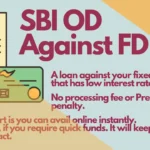Fixed deposits, a time deposits you can get in any bank. There are two types of fixed deposits, one is TDR and the other is STDR.
Literally speaking, both are term deposits but there are certain aspects where one differs from the other. It helps in choosing the right product as per investors’ needs.
We are here to find out what are the differences and what benefits we can get out of these TDR and STDR. But, before we jump into this, let us find out about term deposits.
What is Term Deposit?
A term deposit is a kind of deposit where you keep your money for a fixed period of time. It can be as short as 7 days period. Maximum tenor is up to 10 years.
You will get interest on your deposits and it depends on bank to bank how much they offer. Interest earned on term deposits is taxable. Make sure your account is linked with your PAN number.
Banks normally deduct 10 percent of the interest income. Without PAN detail your bank may deduct up to 20 percent. If you have paid your tax and you want to reduce the TDS portion of your FD. You can declare to your bank with forms 15H and 15G.
Form 15H is for persons above 60 years of age and Form 15G is for persons below 60 years of age. Here is some prominent banks’ FD rate of interest.
You will get options for interest payout. It may be monthly, quarterly, yearly or at the end of the tenor.
Normally most banks pay you in simple interest. While you avail loan interest calculation is normally compound interest. It may be monthly, or quarterly depending on the bank’s terms and conditions.
Liquidity of the fund
What we mean is that these funds you saved in term deposits are normally available for a premature payout if you wish or need funds urgently.
So, liquidity is good although you might lose some part of the interest you have earned or some banks do penalise you for early break out of FDs. Normally penalty is in tune to 2 to 3 percent of what you earned.
Types of term deposits
As per the needs of investors, term deposits have a variety of sub-products deliverable to the depositors. To name a few, we have:
- Senior citizen savings scheme
- TDR and STDR
- Tax saving schemes
- FDs for children
A loan that you can get!
Yes, you heard right! You can avail loan against your fixed deposits. Either it may be a demand loan or an overdraft. The good news is that the interest rates are quite low when compare to other loans.
The rate of interest will be 1 percent above your FD interest rate. For example, if you have a TDR of ₹ 1 lakh at a 4.5 percent interest rate, you can get ₹90000 loans against your TDR at a 5.5 rate of interest.
Isn’t great? And this loan is payable at 36 months EMI. You can also get an overdraft facility against your FD. Available online through internet banking. The rest is the same as a demand loan.
So, let’s find out what does TDR and STDR hold for us!
As said earlier, both TDR and STDR are term deposits that you can maintain for a certain period of time.
Both of them are the same in all aspects. The only thing which differentiates them is the interest payout and its terms.

As per your needs, you have to select which one is suited for you. If you want to get an interest payout every month or quarterly. You will have to go with TDR.
If you want to open FD for a few days, say 7 to within a year, you will have to go with TDR. Other than that, you can go for STDR in which interest payout is annually or at the end of the tenor.
One good thing is that we can open FDs online. That means we do not need to visit the bank for availing of these facilities.






